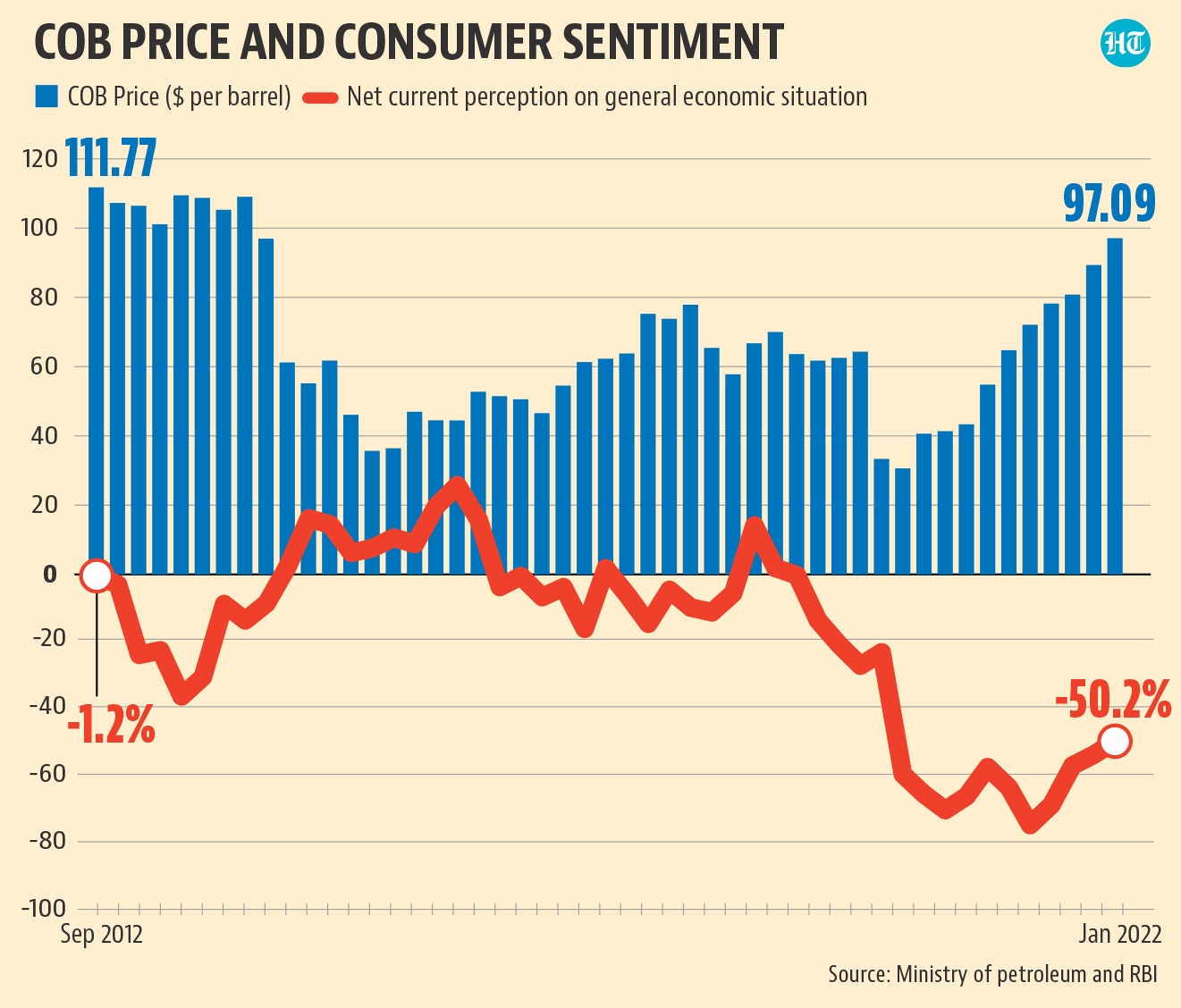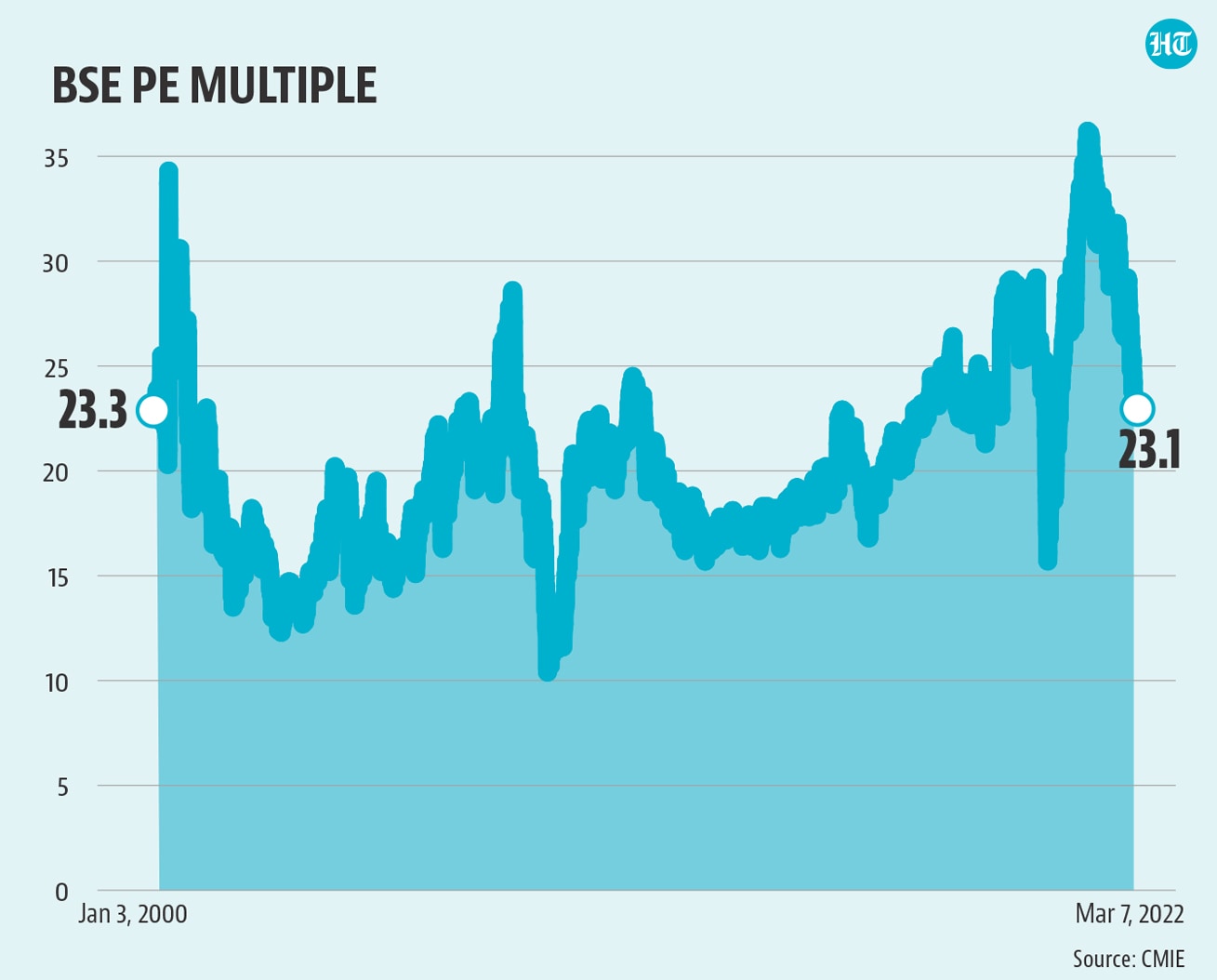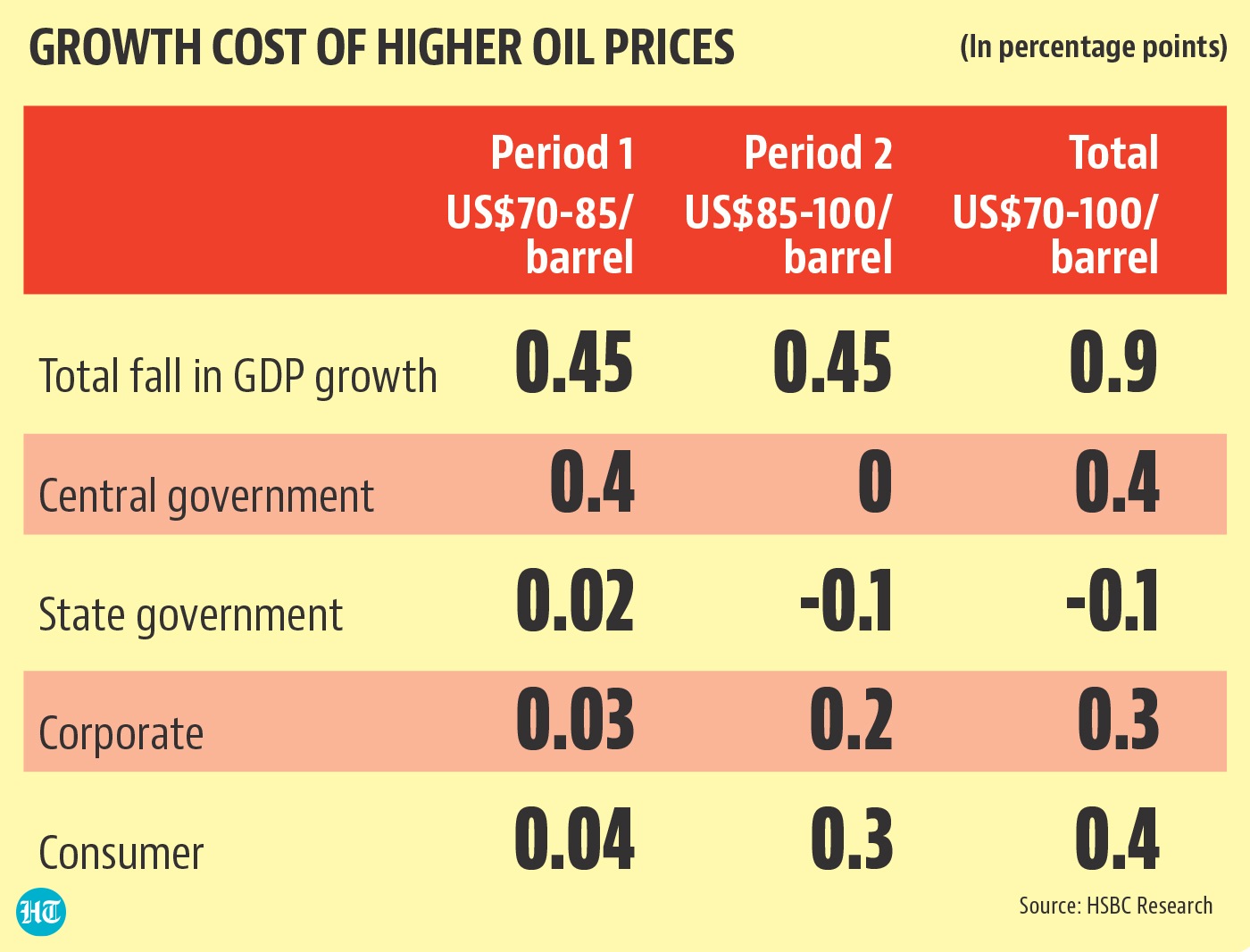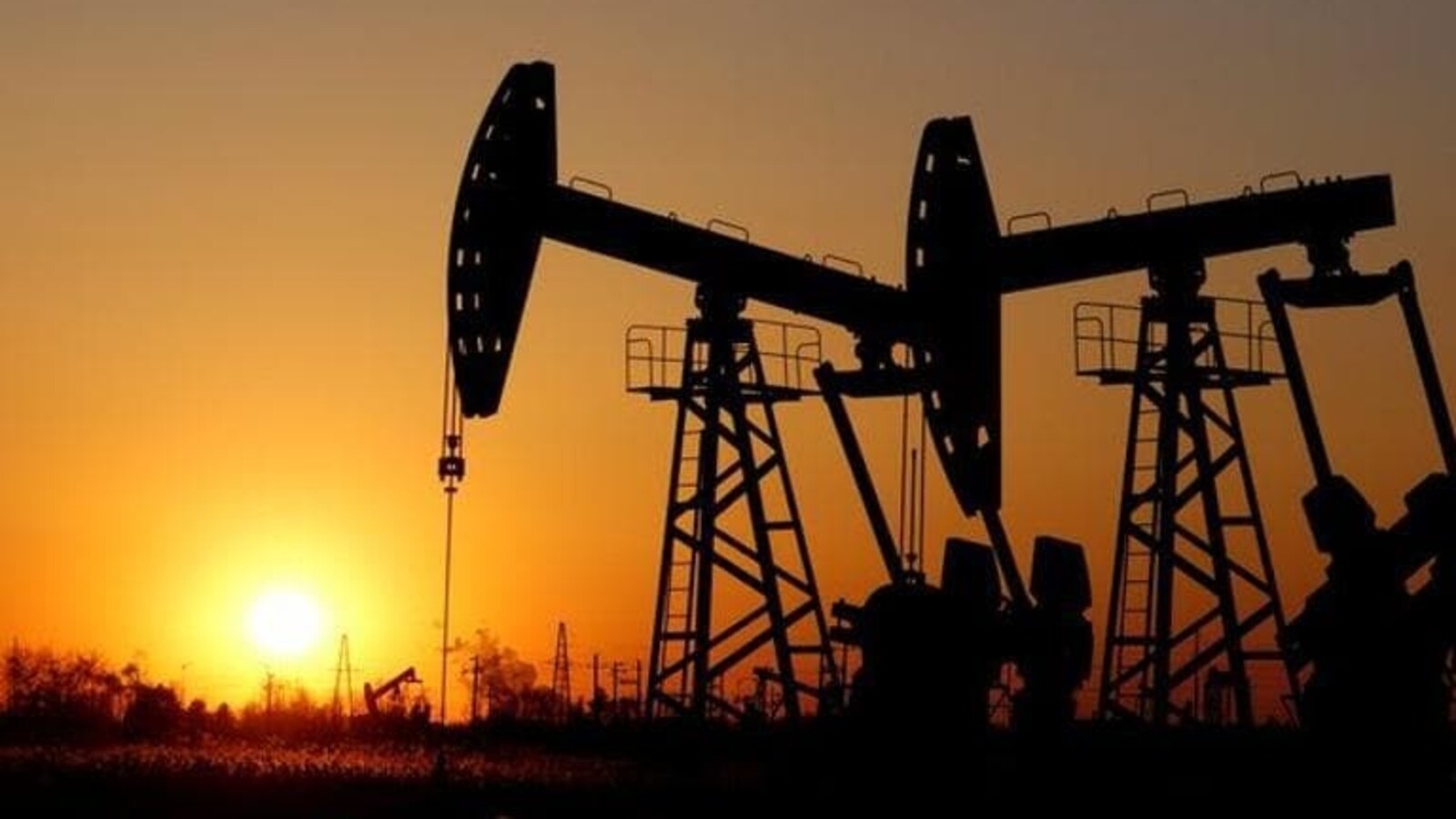Number Theory: The challenge of managing sentiment amid headwinds
For the second time in three years, the government’s budgetary math has been upturned within months of the presentation of the Budget. In 2020, India imposed a 68-day-long nationwide lockdown beginning March 25 to arrest the spread of Covid-19 infections. This took a huge toll on the economy, which suffered a contraction of 6.6% in 2020-21.
This year’s Union Budget was presented at a time when the third wave was still raging, but with hospitalisations still low, and with the country having vaccinated most of its adult population. There was an assumption (a justifiable one) that the country would be able to manage future waves.
But this year, the shock was on the commodity price front. Russia’s invasion of Ukraine has sent commodity prices, most importantly that of crude petroleum, soaring. Crude prices at the moment are almost double the $70-75 per barrel range assumed in the Economic Survey.
With the election cycle over, the unofficial moratorium on prices of petrol-diesel is likely to end soon. It remains to be seen by what magnitude the prices of petrol-diesel are raised. The raise, when it happens, is bound to dampen consumer sentiment, as it will put a squeeze on purchasing power.
The geopolitical disruption and associated uncertainty has also created a turmoil in capital markets. The BSE S&P, India’s benchmark equity index, has lost 7.6% of its value in the last one month.
Managing consumer and investor sentiment going forward is going to be a difficult task for the government.
The last $100 plus crude price phase saw negative consumer sentiment
The present phase of high crude oil prices is not unprecedented. The average price of India’s crude oil basket (COB) was higher than $100 per barrel in 2011-12, 2012-13 and 2013-14. RBI’s Consumer Confidence Surveys give us data on general economic situation from September 2012 onwards. A comparison of these two data points shows that the phase of high crude oil prices coincided with low economic sentiment. The net current perception on general economic situation was negative from September 2012 to September 2014. The COB price was above $100 per barrel during this entire period barring September 2014. To be sure, perception on the general economic situation is likely to be influenced by other factors apart from petroleum prices. But it also needs to be kept in mind that India’s GDP growth rate was actually improving during this period. It was 5.24% in 2011-12, 5.46% in 2012-13 and 6.39% in 2013-14. But inflation’s impact – high fuel prices also percolate to prices of other commodities – is far from insignificant in an economy like India, where income of an overwhelming majority is not indexed to prices. If petrol-diesel prices increase significantly at the moment, an already subdued consumer sentiment could suffer even more. This will have repercussions for revival of aggregate demand.

The state of stock markets, unlike crude prices, is not unambiguously bad
India’s equity markets have been overvalued by historical standards if the price-earnings (PE) multiple is any indication. PE multiple measures the ratio of a stock’s price to earnings per share and therefore gives an idea about the future premium associated with a particular stock. The recent fall in stock prices, while it has significant in absolute terms – the BSE Index has lost 7.6% of its value in the last one month – has only brought the PE value to what can be described at closer to historically normal levels.

This raises a question whether the current correction in the markets is some sort of normalization and hence not exactly a cause for concern. While the government does little in terms of policy interventions to influence stock markets directly, its decision on whether the burden of high petroleum prices will be passed on to the consumers or borne by the government will have a bearing on markets, both equity and bonds. A higher fiscal deficit on account of the state bearing the pain of higher oil prices might send bond yields higher and perhaps will also have a negative impact on stock markets. The normalization of PE multiple suggests that stock market downswings should not influence the course of the macroeconomic policy during this crisis.
Economists expects households to take a bigger hit
Economists have tried to project the impact of what crude oil at $100 means for the economy. A research note by Pranjul Bhandari, chief India economist at HSBC India says that half of the impact of the crude price rise has already been borne by the system. When excise duties were slashed in November, crude prices were at $85 per barrel compared to the average of $70 per barrel in 2021-22. The other half of the impact; prices moving from $85 per barrel to $100 per barrel, is what will be felt when pump prices are increased in March, the note says. Assuming that union excise duties are not cut any further, the central government’s finances will not take any hit, whereas state governments could actually gain because their Value Added Tax (VAT) component will increase with a rise in the base price. The real burden will fall on the private sector; households and corporates combined, with the household sector bearing a bigger burden of the oil price shock. This once again underlines the importance of managing consumer sentiment better.

For all the latest business News Click Here


